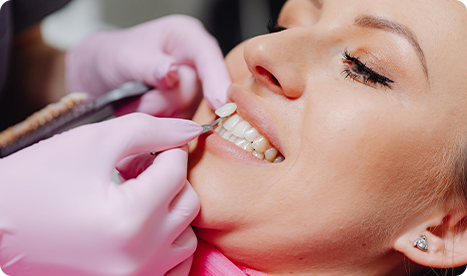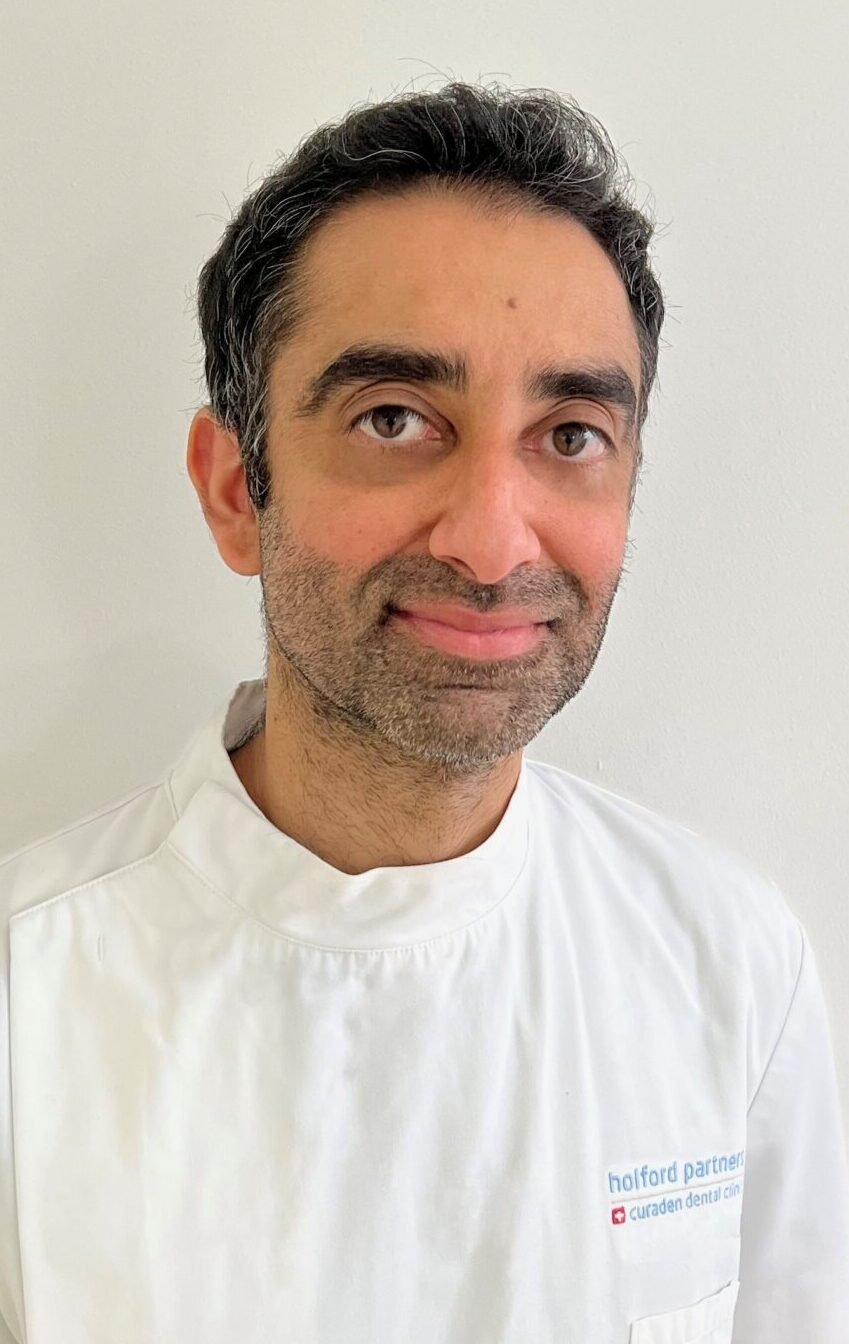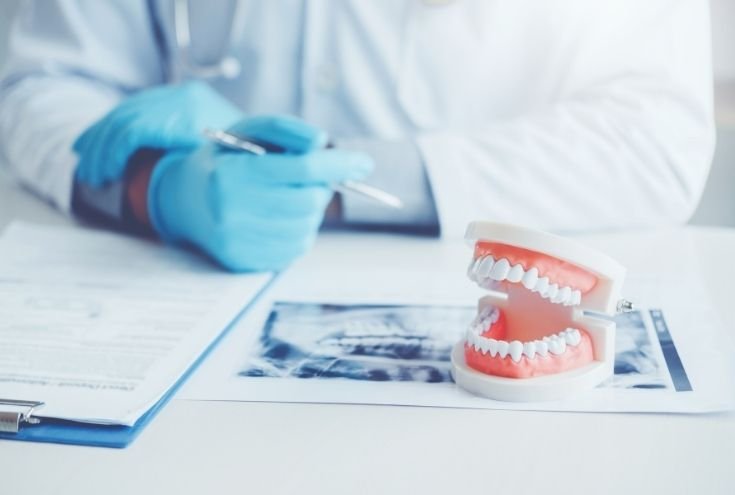

Porcelain Veneers
A veneer is a wafer-thin piece of material, usually porcelain, that is bonded to the front surface of a tooth to improve its appearance. Veneers can completely transform your smile, giving you the freedom to smile with confidence and live your life to the full.
Most veneers are made of porcelain. It is a strong material that closely resembles the texture and appearance of a human tooth. It can easily be matched to the colour of the other team to seamlessly blend into the smile.
Porcelain Veneers
A veneer is a wafer-thin piece of material, usually porcelain, that is bonded to the front surface of a tooth to improve its appearance. Veneers can completely transform your smile, giving you the freedom to smile with confidence and live your life to the full.
Most veneers are made of porcelain. It is a strong material that closely resembles the texture and appearance of a human tooth. It can easily be matched to the colour of the other team to seamlessly blend into the smile.

What are Dental Veneers?
A veneer is a wafer-thin piece of material, usually porcelain, that is bonded to the front surface of a tooth to improve its appearance. Porcelain veneers can completely transform your smile, giving you the freedom to smile with confidence and live your life to the full.
Veneers will change the colour, shape, size or length of your teeth and will truly transform a smile.
Porcelain veneers will provide the most natural looking result. They are one of the strongest materials used that closely resemble the texture and appearance of a humans natural tooth. Their colours are shade matched to your other teeth and their shape will vary to fit the proportions of your teeth to blend in seamlessly. Each porcelain veneer is bespoke and hand made, by our experienced and skilled dental technicians, in line with the needs and requests of each patient.
What are the Different Types of Veneers?
There are two main types of dental veneers: porcelain veneers and composite veneers.
1. Porcelain Veneers: These veneers are made of thin sheets of porcelain that are custom-made to fit over the front surface of the tooth. They are known for their durability, stain-resistance, and natural-looking appearance. Porcelain veneers can be used to improve the appearance of discoloured, worn, uneven, chipped, or gapped teeth.
2. Composite Veneers: These veneers are made of a tooth-coloured composite resin material that is directly applied to the front surface of the tooth. They are a more affordable option than porcelain veneers and can be completed in one visit, but they are not as durable and stain-resistant as porcelain veneers. Composite veneers can be used to improve the appearance of discoloured, chipped, or uneven teeth.
What Problems can Porcelain Veneers Fix?
Veneers can be used cover up issues that make us self conscious when we smile. They can be used to fix teeth that are:
– Worn down
– Chipped or broken
– Misaligned, odd shapes or uneven
– Spaced out and have gaps between them
– Discoloured due to:
—- Root canal treatment
—- Old large composite fillings
—- Excessive fluoride
—- Stains from tetracycline or other drugs
What Are The Pros and Cons of Porcelain Veneers?
Porcelain veneers are a popular cosmetic dentistry treatment that can improve the appearance of discolored, worn, uneven, chipped, or gapped teeth. They offer several advantages, such as:
- Being stain resistant, making them a great option for those who want to maintain a bright, white smile
- A lighter shade can be chosen to permanently whiten teeth that are dark and do not respond to teeth whitening products
- Being a more conservative approach than other dental restorations such as crowns, as the dentist only needs to prepare the front surface of the tooth
- Mimicking the light-reflecting properties of natural teeth, making them appear more natural
- Gums tolerating porcelain well, which means less discomfort and inflammation
However, it’s important to note that porcelain veneers also have some disadvantages. The treatment is irreversible, and porcelain veneers are more expensive than other materials. People who clench and grind their teeth are not ideal candidates for porcelain veneers as it can cause the veneers to crack or chip.
Patients can sometimes become lazy when it comes to cleaning their teeth after veneers are fitted, which can cause unwanted cavities and decay. Therefore, it’s important to ensure you are brushing your teeth well at home and visiting your dentist and hygienist regularly to maintain good oral hygiene. Additionally, the shade or colour of a veneer cannot be altered once it has been cemented. If you plan on having porcelain veneers make sure to whiten the other teeth prior to getting your veneers fitted.
With a complete range of cosmetic dentistry treatments and services available from some of the most skilled and experienced cosmetic dentists, Holford Partners Curaden is the dental practice you can trust to meet your smile expectations. You only get one smile – and we’re here to ensure it is as bright and healthy as it can possibly be.
What is the Process of Dental Veneer Treatment?
Getting dental veneers requires 3 easy, pain free visits to our experienced cosmetic dentists.
Step 1 – The consultation.
Step 2 – Preparation and impressions of your teeth followed by the fitting of your temporary veneers.
Step 3 – Fitting your permanent veneers.
Whether it is one or many teeth, this should not alter the number of visits and they can usually all be done at the same time.
1. The Consultation
During a consultation, you will talk to your dentist about the type of smile you want to achieve. They will examine your teeth to see if dental veneers are a good option for you. They will also talk to you about the cost, the procedure and any limits. The dentist may take X-rays, impressions, or digital scans of your mouth and teeth, along with some pictures.
2. Temporary Veneers “Test Drive”
Once you have decided you would like to proceed with veneers, your dentist will begin by preparing your teeth for the procedure, which will involve removing a small portion of the tooth surface to make room for the veneers. This will be done using local anaesthetic to minimize any discomfort. Following the preparation, an impression of your teeth will be taken and sent to a dental laboratory where your custom veneers will be crafted. This process typically takes around two weeks.
During the waiting period for your permanent veneers, you will be fitted with temporary veneers. These will allow you to get a sense of how the final veneers will look and make any desired adjustments
3. Your New Smile
Once your custom porcelain veneers are ready, your dentist will remove the temporary veneers and try on the new ones. They will ensure a proper fit, colour, and shape before bonding them permanently to your teeth. Any excess material will be trimmed, and your bite will be examined and adjusted as needed to ensure a comfortable and functional final result.
Dental veneers do not require any specialist care. However if you follow these instructions you will be sure to have your porcelain veneers for a much longer time before they need replacing:
1. Maintaining good oral hygiene: Brush and floss your teeth at least twice a day to keep the veneers and your natural teeth clean and healthy.
2. Refraining from biting on hard objects: Avoid biting on hard objects such as pens, pencils, and fingernails, as this can damage your veneers.
3. Visiting your dentist regularly: Schedule regular check-ups and cleanings with your dentist to ensure the veneers are in good condition and to address any issues that may arise.
4. Avoiding teeth grinding and clenching: if you suffer from teeth grinding or clenching, consider using a night guard to protect your veneers from damage.
It’s important to follow the instructions of your dentist or dental professional for the best outcome.
How much are porcelain veneers?
Our porcelain veneers are individually hand crafted and custom made for each patient.
PORCELAIN VENEERS (per tooth) ……………….. from £1200
Prices may be subject to change. For more information please feel free to contact us on 020 7499 9806 or at smile@holfordcuraden.com
Porcelain Veneers
BEFORE & AFTERS
Single Tooth
Multiple Teeth
Who offers this treatment?
When Are Porcelain Veneers Used?
Veneers can be used in a wide range of situations to improve the appearance of unsightly teeth.
They are a fast, effective solution that is less invasive than procedures like crowns or dental implants.
Veneers give the appearance of a wider, brighter and healthy smile.
They are more permanent and longer lasting than tooth whitening or other ‘freshening up’ treatments.
Boost Your Confidence When You Smile!
If you are self conscious of your smile and to do something about it, your best bet is to go to Holford Partners Curaden. We guarantee effective and long-lasting results, bringing your confidence to the next level. So book an appointment to see us now.




Frequently Asked Questions
Veneers are usually fitted over the course of three visits.
Your first appointment will be to discuss exactly what you want to achieve and how veneers can achieve this result. You are in control of how your smile will look – with the guidance of a trained and experienced dentist, of course! If you’re going for a smile makeover, now would be the time to get your teeth whitened too.
At your second appointment, the teeth being fitted with veneers will need to be prepped. This involves removing a small amount of the natural tooth to accommodate the shell of the veneer and ensure it fits snugly into place and well aligned with the rest of your teeth. Your dentist will use detailed impressions of your teeth to create the individual shapes of your new veneers. It will then be sent to the dental laboratory to be created, exactly to the specifications provided by your dentist.
Your third and final visit will see the veneers bonded to your teeth, permanently transforming the appearance of your smile – and you!
Ready to see how veneers will revitalise you? Book an appointment with one of our cosmetic dentists today.
Porcelain veneers will generally last between 7 and 15 years. However we have some patients who were treated over 20 years ago and still very happy with the results. After this time, the veneers would need to be replaced.
Yes, preparation is required before getting porcelain veneers. A small amount of tooth enamel may need to be removed to make room for the veneer. This is a simple and painless procedure that can be done in a single visit to the dentist. If you would prefer to have non-prep veneers then composite veneers/bonding may be a more desirable treatment option.
Porcelain veneers are not painful, but you may experience some sensitivity or discomfort after the procedure. This is normal and should subside within a few days. Before the procedure, your dentist will numb the area with a local anaesthetic to minimize any discomfort during the procedure. You may feel some pressure or vibration during the tooth preparation process, but it should not be painful. After the procedure, you may experience some mild sensitivity to hot or cold temperatures, but this is usually temporary.
Your dentist may recommend over-the-counter pain medication to manage any discomfort and also give you specific instructions on how to care for your teeth and gums after the procedure. It’s important to follow these instructions closely to help minimize any post-procedure discomfort and to ensure proper healing.
If you experience any severe pain or discomfort, you should contact your dentist as soon as possible.
Porcelain veneers are a permanent treatment as they involve removing a small amount of tooth enamel to make room for the veneer, and once they are bonded to the tooth, they cannot be easily removed. The veneers can be removed however, this process can cause further removal of the natural tooth structure and is not reversible.
Once the veneers are removed, the natural teeth will not look the same as before the treatment, as the teeth will have been slightly reshaped during the preparation process. Therefore, before deciding to get porcelain veneers, it’s important to discuss the potential risks, benefits, and alternatives with your dentist, and also to consider whether the treatment is suitable or not.
It’s also worth noting that even if the veneers are removed, the underlying issues that led to the need for veneers will still be present, such as discoloration, gaps, or misshapen teeth, so it’s important to consider all options before making a decision.
After getting porcelain veneers, it’s important to avoid certain foods and drinks for a period of time to allow the dental cement to fully cure and bond the veneers to your teeth. Your dentist will provide specific instructions on what you can and cannot eat or drink, but generally, it’s recommended to avoid hard, crunchy, sticky, or chewy foods for at least 24-48 hours after the procedure.
It’s also important to avoid eating or drinking anything that can stain the veneers, such as coffee, tea, or red wine, for at least a few days after the procedure. It’s also important to avoid using tobacco products as they can discolour the veneers and also reduce the bonding strength.
You can typically eat and drink normally after this period, but it’s important to practice good oral hygiene, such as brushing and flossing regularly, to keep your veneers and natural teeth clean and healthy.
Alternative treatments to veneers include composite bonding and crowns. Veneers are a nice in-between option. Veneers may be your best choice if you want to change the shape of your teeth more than just a little bit, as is done with bonding, but not enough to require a full crown which wraps around the entire tooth.










